Risingstarling - Inner Ramblings
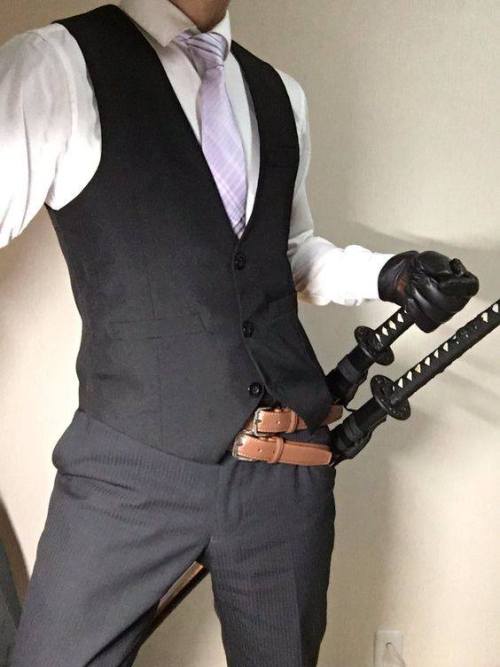

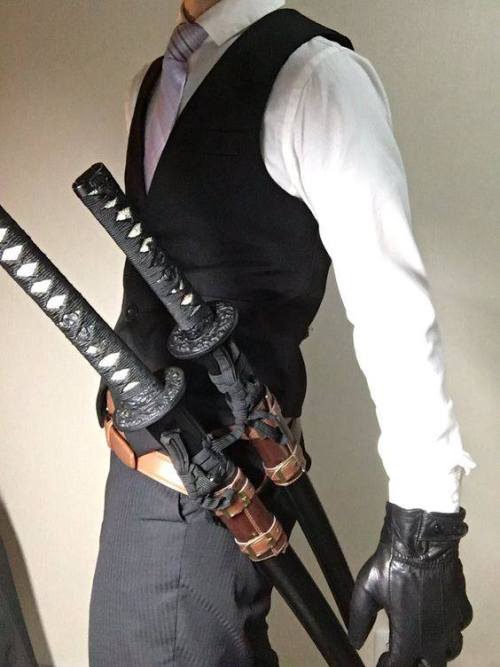
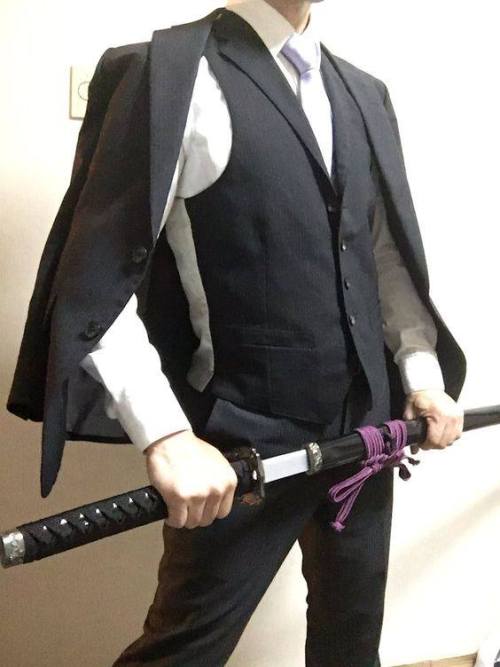
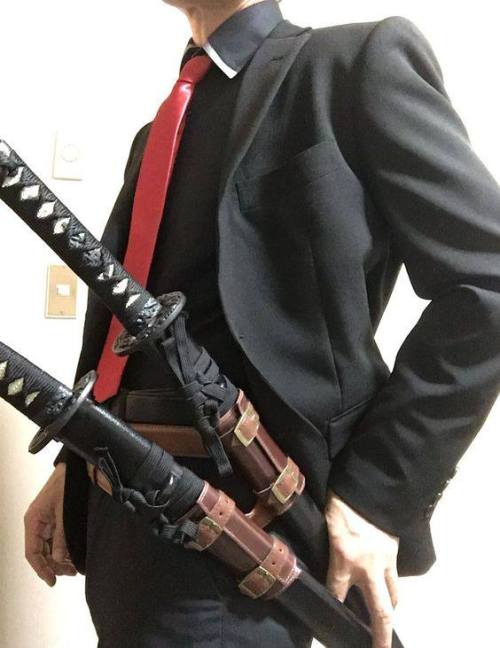


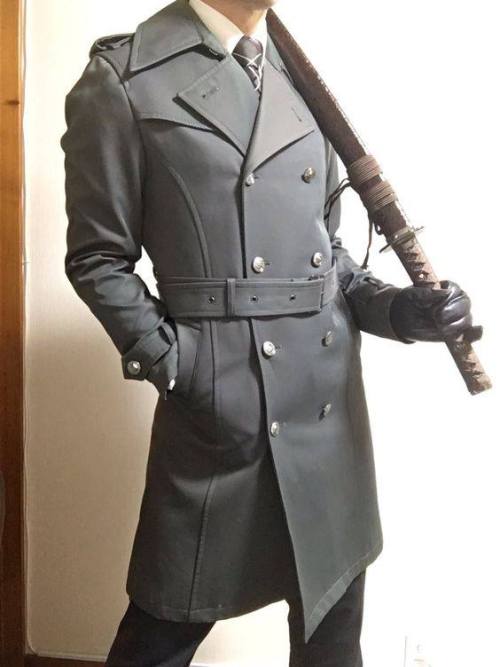


More Posts from Risingstarling and Others

Below you will find my Academia FAQ. If you still can’t find something feel free to ask! My Study Tips page should be helpful, as well.
Study Strategies
How do you organize your notes?
How do you take notes in class?
Have any tips of binder organization?
How do you study before tests?
How do you write science papers?
I forgot everything from last semester… What should I do?
How do I deal when there’s so much to do but so little time!?
What is the “blank sheet method”?
How do you study for finals? x and x
Rewriting my notes works for me; how can I do it more effectively?
“How should I study for…?”
How should I study for chemistry?
How should I study for organic chemistry?
How should I study for calculus?
How should I study for [other specific class]?
How should I study to get 5s on my AP exams?
School Supplies
Do you have a basic list of study supplies? x and x
Where did you buy your book stand? | Is it good for heavy textbooks?
Do you buy physical textbooks or eBooks? | Where do you buy them?
What’s the hype with mini Moleskines? | Where can I buy some?
What should I put in the mini Moleskines?
Is there a better alternative to Moleskine notebooks?
Best books for bio/biochem/chem majors?
What do you use your colored pens for? | What pens do you use for notetaking?
What are your favorite pens?
Where did you get your laptop stand?
What are some good study apps?
Tablets or real notebooks?
Where do you buy your Cornell notebooks? | Are they helpful?
Do Bose Noise-Cancelling Headphones work?
Where is your desk from? & What is on your desk?
What kind of calculator would you recommend?
General College
Should I expect freshman year of college to be a breeze or really difficult?
How can I study more efficiently so I have time for friends and extracurriculars?
My professor doesn’t lecture well; what should I do?
What’s the most challenging part of college?
I have to work a lot to pay for college; any advice?
How do I get into a research lab?
How can I stay on top of studying, extracurriculars, work, and friends? x and x
How many clubs should I participate in?
How should I deal with mental illness in college?
What can I do to stay involved while still being able to maintain a good GPA?
How can I figure out my learning style?
What are the most important things you’ve learned in college?
College Majors and Pre-Career
Any advice for undecided majors? x and x
What kind of classes can I expect as a chem major?
I really love biology and chemistry; is biochem the major for me?
How do I choose between biochemistry and chemistry as a major?
I want to be a neurosurgeon; what major should I choose?
Why did you switch from pre-MD/PhD to pre-PhD?
Why did you decide against medical school?
My advisor said I don’t have the mind for chemistry. Should I switch majors?
I’m not that great at math… Should I give up on science?
What are the pros and cons of a double major?
GPAs and Grades
How do I recover from a bad exam grade?
How do I recover from a bad semester?
Can I get As without pulling all-nighters?
I’ve been giving 200% but only getting Bs; how can I fix this?
I’m average or low GPA; am I taking the right path?
Is my high school GPA a good indicator for university and career performance?
Studyblr
What studyblrs would you recommend? x and x
How can I become a successful studyblr?
Any tips for writing original posts?
How did I not notice this?
I KIND OF JUST REALIZED THAT JESSIE FROM TEAM ROCKET FORMS A FUCKING R WITH HER HAIR AND BODY

WHY DID IT TAKE ME OVER 10 YEARS TO REALIZE THIS

Japanese learning mistakes… There are TONS. Should you be worried and give up? NO! Because making mistakes and SCREWING UP is a NECESSARY part of learning. Only after you make a mistake and get corrected is when you get better!
So here’s a big list of Japanese Mistakes lesson for you. So that you get better at Japanese. Hope you enjoy!
Source – Taken from
For Learners: Top 52 Japanese Mistakes That Beginners Make
http://www.linguajunkie.com/japanese/japanese-mistakes-by-learners
1. Mistaking Particles Wa & Ga
は・が
This is one of the most common Japanese mistakes that learners make.
It is really hard to suggest a solution for this since even Japanese have moments where they doubt which one of these should be used. You really need to get used to it with time. But, let’s try anyway:
Solution: To put it simply:
は identifies the topic of the sentence
が identifies the subject of the sentence
2. Mistaking Particles Ni & De
に・で
Another common one. Both of these are connected with actions, but to make it a bit simpler let’s say that.
Solution…
に identifies and indicates “existence”, the location of the object.
で on the other hand indicates the location where the action is taking place.
3. Adjectives ending with い in the past tense
Yet another common mistake which pops up even if you’re not a beginner. Let’s take the word 寒い (cold). You see many learners who use 「寒いでした。」It’s wrong.
Solution:
The correct and polite way of saying “It was cold” is 「寒かったです。」.
It is important to pay attention to what type of an adjective you are using な or い.
4. Saying “You” in Japanese
あなた・君
Unlike English, one doesn’t really use the word you while talking to Japanese people.
Solution:
Instead we use the name of the certain person instead of saying you.「今日太郎に会えて良かった。」 is one example. Or, don’t say “you” at all. It’s kind of confrontational.
5. Saying “I” in Japanese
俺 – Ore (masculine)
僕 – Boku (masculine)
私 – Watashi (m/f)
あたし – Atashi (feminine)
There is a large number of personal pronouns in Japanese and the usage also depends on the gender, age, context, and of course your relation and the position of the person you are talking to.
Just be careful to use the gender appropriate pronoun, otherwise you might be frowned at.
Solution:
Say watashi for now. It’s safe and polite. Later, once you understand the full nuances, use them as you wish.
6.The Little Tsu
っ・ッ
Stop! Another one of the common Japanese mistakes here!
Okay this tiny little thing changes the pronunciation of your word and along with it most likely even the meaning. It basically is used to double the sound of the consonant. If you pay attention to your pronunciation, this shouldn’t be a huge problem.
7. Long vowels
Yet another pronunciation mistake pretty similar to the one above. More often than not the meaning of the word will change depending on the length of the vowel, for example:
おばさん (aunt)
おばあさん (grandmother)
8. Iru & Aru in Japanese
いる・ある
Mixing these up is a very common Japanese mistake.
These are words indicating existence of living beings and things respectively. It is common to see learners use ある when talking about animals, but you should keep in your mind that with animals and birds, and everything else that can breathe you use いる.
Solution:
Living Beings: Use いる
Inanimate Objects: Use ある
9. Katakana – カタカナ
For some reason many learners find it harder to remember katakana compared to hiragana and kanji. A
And yet another issue is we never seem to understand what the katakana words mean since they often do not match their English pronunciations. Hence, we too pronounce English words wrongly when we try to change them into katakana.
This would go on the “understandable” Japanese mistakes list. If you make it, I can sympathize.
10. The excessive usage of と
と is pretty much the equivalent of “and” in English. However it cannot be used in every situation. For example when you are connecting adjectives you can’t use と.
Solution:
Instead you will have something like this: 「可愛くて、美しくて、素敵だった」. In other words the form of the word itself changes.
11. Apologizing in Japanese
There are a lot of words in Japanese that can be used for apologizing, and they vary from situation to situation. However let’s concentrate on 「ごめんなさい」 and 「すみません」. They are quite interchangeable but to make it easier for you:
Solution
Let’s say that:
ごめんなさい is equivalent to “sorry”
すみません is “excuse me”.
Keep it simple and use them like that.
12. Japanese Greeting Mistakes
The most common greeting in Japan is 「こんにちは」. However when meeting close friends it is better to avoid this phrase, since it is formal.
Solution
You’d have better chances of bonding with your friends if you use おっす/hello for bye orおつかれ/otsukare for bye.
13. Dakara and Kara
だから・から
And again, learners tend to use だから even when から is supposed to be used. A simple example of this will be 「美味しいだから」.
Solution
だから is usually used with nouns and な type of adjectives, not with verbs or い adjectives.
14. Misusing Desu kara
~ですから
We often use this when we are explaining something, or pointing reasons for this or that. However to most Japanese this will sound like you are trying to find an excuse for your actions.
15. Calling someone “san”
~さん
Now 「さん」 is a suffix that we add when we are talking to somebody, but a lot of Japanese learners seem to add this even to their own names when talking about themselves. Just DO NOT ever do this.
16. Thanking someone in Japanese
ありがとう・ありがとうございます
Well the main difference here is informal/formal.
However you should be careful when using the informal version. If you are talking to somebody who is clearly above you, be it age-wise or position-wise, no matter how close you are there are situations when it’s better to use the formal version. For example, when you have asked them for a favor.
17. Keigo – 敬語 (formal speech)
Now, this is the opposite of the above above. Do not talk to your close friends in 敬語 (unless you have to ask them to do a big favor to you), because this will make them think you are trying to distance yourself from them and all of this can get in the way of your friendship.
18. Sorea, Are, Soko, Asoko
それ – Sore – That
あれ – Are – That (over there – further than sore)
そこ – Soko – Over there
あそこ – Asoko – Way Over there (further than asoko)
These mean that and there if you look for the English equivalents. However as in everything else with Japanese, the nuances matter. To put it simply それ indicates closeness to the person you are talking to, while あれ suggests that the thing is not close to either of you.
19. Gender appropriate
Japanese is a very gender specific language, like it or not. It’s not like you will become a social outcast but people will point out that you sound girly, or that you have a very dirty and boyish vocabulary for a young girl.
20. The Overall Mess of Kanji
We can turn this article into 1,000 Japanese mistakes if we expanded on this.
So!
If you have been learning Japanese for any period of time and do not have Chinese or Korean background, kanji has probably been a pain in the neck for you. You miss one tiny part and the meaning of the word changes. Not to mention there are hundreds and hundreds of them to memories.
21. Confusing words that have the exact same pronunciation
Okay, this might be a bit tricky, but you have to figure out the meaning out of the context or depending on the kanji and intonation. Not much else can be done.
Here are some examples:
地震・自身 – both are “jishin”
橋・箸・端 – all are “hashi”
22. ~してもいいですか・~してもよろしいでしょうか
They both basically mean “can i do this”, however the main difference is in the level of politeness. If you are talking to a senpai, teacher, professor, boss, somebody who is older than you, or somebody who is above you in any way, it is highly recommended to use the latter rather than the former.
23. Kawaiisou vs Kawaisou
可愛いそう – Kawaiisou
可哀そう – Kawaisou
When you try to describe something, you usually add ~そう at the end of your い adjective. To do this you cut the い and replace it with the ~そう. However, even though the difference is clear in written form thanks to kanji, a mistake in pronunciation will change the meaning from “cute” to “pitiful”.
24. Misusing Morau, Ageru, Kureru
もらう・あげる・くれる
I don’t know about you but learning the difference between these was a burning hell to me. もらう means to receive, while the other two mean to give.
However, depending on how you use these, the meaning can get pretty confusing, i.e. 「手伝ってくれてもいいですか。」 is offering your help to someone, so be sure to use もらう instead if you are looking for help!
This is one of those Japanese mistakes even the pros make at times.
25. The Particle No
の
A lot of people seem to misuse 「の」. For example, using a の in between an adjective and noun –「厳しいの先生」– Kibishii no sensei – strict teacher.
The 「の」here is redundant and there is no need to use it at all. Why? Because the adjective already modifies AND belongs to the noun. That’s the job of an adjective, to modify a noun. There’s no need to use の.
http://www.linguajunkie.com/japanese/japanese-mistakes-by-learners
Some Artist Tips you May or May Not Know
Just from personal experience.
1: Never try to draw on an empty stomach. You’ll make mistakes and be uncomfortable. (But don’t stuff yourself till you’re sick either.)
2: If you have to go to the bathroom, go. A full bladder or otherwise does serious damage to the attention and patience spans. Plus it gives you time to stretch your legs.
3: Before you ink it, leave it alone. Come back later (a few hours, a day?) and check for major anatomy mistakes. Work on something else while you’re waiting.
4: Stay hydrated! The brain and fine motor skills work better when properly circulated.
5: Do not have an excessive amount of sugar before sitting down to work. You’ll get jittery and impatient. Same goes for immense amounts of caffeine.
6: If you’re stuck, take a break to stand and stretch. Walk around the room. But don’t THINK of it as a break. Just take time to really focus on your body. Loosen it up, get a goooood long stretch and some deep breaths. (but don’t pass out!) It’ll jolt the mind awake and let you really relax a moment.
7: Keep. All. Your. Old. Art. I don’t care what it is. Keep it. Date it if it’s in your computer folders. Make a suitcase filled with it. (I personally have ALL my old art in a thick work folder.)
8: Keep your sketchbooks together, used and unused. If there’s a good sale on sketchbooks, get two or three! You won’t regret it later. There’s no such thing as too many. (I currently have about ten spankin’ new sketchbooks and I know I’ll need/use every single one of them.)
9: Date your sketchbooks. Put a start and finish date on them.
10: I’m afraid I don’t practice this one: date your drawings. You’ll be happy about it later. You don’t need to SIGN every drawing, but do date them. At least date pages.
11: ART BLOCK HAPPENS. Art block is pretty much a CONSTANT state of mind for artists. You’re never out of art block totally. But sometimes you get bursts of inspiration that make it feel like you’re out. So instead of feeling like you’re ill if you suddenly have artblock, remind yourself that this happens all the time, and you get out of it eventually, every time. c:>
12: If you’re REALLY stuck on some bad art block, do what I do.
Draw a brain barf. This is where you take a blank sheet of paper, and you just LET your hand be A.D.D. Draw whatever comes to mind, as it comes to mind. in the middle of drawing a hippo in a top hat but you think of a jolly rancher riding a unicycle? Switch immediately.
Let your brain just vomit all over the page. You’ll be surprised what comes up and what art block this can get you out of. It’s gotten me out of it various times.
13: Take advice from more experienced artists. But do NOT take everything as Gospel. Some people are just wrong.
14: HAND SHYNESS/ ART ENVY/ SELF CONSCIOUSNESS/ AND SKILL IMPATIENCE WILL EAT YOU ALIVE like a Titan. Do not let yourself get shy after looking at ‘better art’, do not let yourself think your art is worthless or your skills are worthless, and do not let yourself get frustrated that you cannot be at a higher skill level RIGHT NOW. Your brain will try to do this. All the time. Keep yourself in check. If you keep going at it, and keep working, you will get better. This is why you keep your old art. Look at it to remind you how far you’ve come.
15: Draw what you like. This is so important. (This does not apply for exploitative art. :l That’s just wrong. So long as you’re not targeting someone harmfully, I guess you’re fine.)
But don’t let people’s preferences dictate what you can and can’t draw. Draw whatever the heck you like. Accept that no matter WHAT there will be someone out there that hates it. Always. This is just a fact of life. But don’t let it get you down. I would have stopped being an artist at day one if I had.
16: You never. Stop. Learning. Ever. You will be old and grey and still be learning new things. That’s okay. That’s the nature of art. Even the ‘pros’ don’t know everything.
I hope these help someone out there~

VICTORIAN TEA CAKE!
½ cup unsalted butter softened 1 cup granulated sugar 2 eggs at room temperature ½ teaspoon vanilla 1 ¾ cup sifted cake-and-pastry flour 1 ½ teaspoon baking powder 1 pinch salt ½ cup milk icing sugar
Filling : 2/3 cups whipping cream ½ cup strawberry jam
Grease and flour 8- or 9-inch (1.2 or 1.5 L) round metal cake pan; line bottom with parchment paper. Set aside.
In large bowl, beat butter until light and pale, about 2 minutes. Beat in sugar, 3 tbsp (45 mL) at a time, beating for 30 seconds after each addition, about 2 minutes. Beat in eggs, 1 at a time, beating well after each. Beat in vanilla.
In separate bowl, whisk together flour, baking powder and salt; sift into butter mixture alternately with milk, making 3 additions of dry ingredients and 2 of milk. Scrape into prepared pan.
Bake in 350 F (180 C) oven until cake tester inserted in centre comes out clean, 30 to 35 minutes. Let cool in pan on rack for 10 minutes. Turn out onto rack; peel off paper. Let cool.
Filling: In bowl, whip cream. Invert cake onto platter. Using long serrated knife, cut in half horizontally. Spread with jam; top with cream. Replace top of cake. Sift icing sugar over top.
Your Character’s Personality
Personality is the most important thing about your character.
So, whenever I see character sheets, most people just put a little paragraph for that section. If you’re struggling and don’t know what your character should say or do, what decisions they should make, I guarantee you that this is the problem.
You know your character’s name, age, race, sexuality, height, weight, eye color, hair color, their parents’ and siblings’ names. But these are not the things that truly matter about them.
Traits:
pick traits that don’t necessarily go together. For example, someone who is controlling, aggressive and vain can also be generous, sensitive and soft-spoken. Characters need to have at least one flaw that really impacts how they interact with others. Positive traits can work as flaws, too. It is advised that you pick at least ten traits
people are complex, full of contradictions, and please forgive me if this makes anyone uncomfortable, but even bullies can be “nice” people. Anyone can be a “bad” person, even someone who is polite, kind, helpful or timid can also be narcissistic, annoying, inconsiderate and a liar. People are not just “evil” or “good”
Beliefs:
ideas or thoughts that your character has or thinks about the world, society, others or themselves, even without proof or evidence, or which may or may not be true. Beliefs can contradict their values, motives, self-image, etc. For example, the belief that they are an awesome and responsible person when their traits are lazy, irresponsible and shallow. Their self-image and any beliefs they have about themselves may or may not be similar/the same. They might have a poor self-image, but still believe they’re better than everybody else
Values:
what your character thinks is important. Usually influenced by beliefs, their self-image, their history, etc. Some values may contradict their beliefs, wants, traits, or even other values. For example, your character may value being respect, but one of their traits is disrespectful. It is advised you list at least two values, and know which one they value more. For example, your character values justice and family. Their sister tells them she just stole $200 from her teacher’s wallet. Do they tell on her, or do they let her keep the money: justice, or family? Either way, your character probably has some negative feelings, guilt, anger, etc., over betraying their other value
Motives:
what your character wants. It can be abstract or something tangible. For example, wanting to be adored or wanting that job to pay for their father’s medication. Motives can contradict their beliefs, traits, values, behavior, or even other motives. For example, your character may want to be a good person, but their traits are selfish, manipulative, and narcissistic. Motives can be long term or short term. Everyone has wants, whether they realize it or not. You can write “they don’t know what they want,” but you should know. It is advised that you list at least one abstract want
Recurring Feelings:
feelings that they have throughout most of their life. If you put them down as a trait, it is likely they are also recurring feelings. For example, depressed, lonely, happy, etc.
Self Image:
what the character thinks of themselves: their self-esteem. Some character are proud of themselves, others are ashamed of themselves, etc. They may think they are not good enough, or think they are the smartest person in the world. Their self-image can contradict their beliefs, traits, values, behavior, motives, etc. For example, if their self-image is poor, they can still be a cheerful or optimistic person. If they have a positive self-image, they can still be a depressed or negative person. How they picture themselves may or may not be true: maybe they think they’re a horrible person, when they are, in fact, very considerate, helpful, kind, generous, patient, etc. They still have flaws, but flaws don’t necessarily make you a terrible person
Behavior:
how the character’s traits, values, beliefs, self-image, etc., are outwardly displayed: how they act. For example, two characters may have the trait “angry” but they all probably express it differently. One character may be quiet and want to be left alone when they are angry, the other could become verbally aggressive. If your character is a liar, do they pause before lying, or do they suddenly speak very carefully when they normally don’t? Someone who is inconsiderate may have issues with boundaries or eat the last piece of pizza in the fridge when they knew it wasn’t theirs. Behavior is extremely important and it is advised you think long and hard about your character’s actions and what exactly it shows about them
Demeanor:
their general mood and disposition. Maybe they’re usually quiet, cheerful, moody, or irritable, etc.
Posture:
a secondary part of your character’s personality: not as important as everything else. It is advised you fill this out after. Posture is how the character carries themselves. For example, perhaps they swing their arms and keep their shoulders back while they walk, which seems to be the posture of a confident person, so when they sit, their legs are probably open. Another character may slump and have their arms folded when they’re sitting, and when they’re walking, perhaps they drag their feet and look at the ground
Speech Pattern:
a secondary part of your character’s personality: not as important as everything else. It is advised you fill this out after. Speech patterns can be words that your character uses frequently, if they speak clearly, what sort of grammar they use, if they have a wide vocabulary, a small vocabulary, if it’s sophisticated, crude, stammering, repeating themselves, etc. I personally don’t have a very wide vocabulary, if you could tell
Hobbies:
a secondary part of your character’s personality: not as important as everything else. It is advised you fill this out after. Hobbies can include things like drawing, writing, playing an instrument, collecting rocks, collecting tea cups, etc.
Quirks:
a secondary part of your character’s personality, not as important as everything else. It is advised you fill this out after. Quirks are behaviors that are unique to your character. For example, I personally always put my socks on inside out and check the ceiling for spiders a few times a day
Likes:
a secondary part of your character’s personality, not as important as everything else. It is advised you fill this out after. Likes and dislikes are usually connected to the rest of their personality, but not necessarily. For example, if your character likes to do other people’s homework, maybe it’s because they want to be appreciated
Dislikes:
a secondary part of your character’s personality, not as important as everything else. It is advised you fill this out after. Likes and dislikes can also contradict the rest of their personality. For example, maybe one of your character’s traits is dishonest, but they dislike liars
History:
your character’s past that has key events that influence and shape their beliefs, values, behavior, wants, self-image, etc. Events written down should imply or explain why they are the way they are. For example, if your character is distrustful, maybe they were lied to a lot by their parents when they were a child. Maybe they were in a relationship for twenty years and found out their partner was cheating on them the whole time. If their motive/want is to have positive attention, maybe their parents just didn’t praise them enough and focused too much on the negative
On Mental and Physical Disabilities or Illnesses
if your character experienced a trauma, it needs to have an affect on your character. Maybe they became more angry or impatient or critical of others. Maybe their beliefs on people changed to become “even bullies can be ‘nice’ people: anyone can be a ‘bad’ person”
people are not their illness or disability: it should not be their defining trait. I have health anxiety, but I’m still idealistic, lazy, considerate, impatient and occasionally spiteful; I still want to become an author; I still believe that people are generally good; I still value doing what make me feel comfortable; I still have a positive self-image; I’m still a person. You should fill out your character’s personality at least half-way before you even touch on the possibility of your character having a disability or illness
Generally everything about your character should connect, but hey, even twins that grew up in the same exact household have different personalities; they value different things, have different beliefs. Maybe one of them watched a movie that had a huge impact on them.
Not everything needs to be explained. Someone can be picky or fussy ever since they were little for no reason at all. Someone can be a negative person even if they grew up in a happy home.
I believe this is a thought out layout for making well-rounded OCs, antagonists and protagonists, whether they’re being created for a roleplay or for a book. This layout is also helpful for studying Canon Characters if you’re looking to accurately roleplay as them or write them in fanfiction or whatever.
I’m really excited to post this, so hopefully I didn’t miss anything important…
If you have any questions, feel free to send a message.
- Chick

(I feel like there’s no way this hasn’t been done before, but I couldn’t find anything, so here)






Checklist for character development.
Created by myself, compiled from questions gleaned from several sources, and some of my own additions.
It should be noted, that not every character will check every one of these things off. It is not REQUIRED to have all this information, but this checklist is, rather, a guideline for helping you think of your character as an entire, three dimentional being with thoughts, feelings, possessions, contradictions and background.
A character is 20% revealed to the reader, 80% writer/author/Mun knowledge. What the Reader sees is just the tip of the iceburg, but without the other 80% the character can’t help but come off feeling shallow. There’s nothing beneath the surface - KNOWING as much bout your character as possible, instrinsicly, in detail, intimately, can do nothing but help build believability and dimension to your character.
Use only the things on this list that you feel are important, but I would like to remind you that the reader learns a lot about a character NOT through exposition (that’s kind of a cheat, and always feels , to me, like a rather clunky way of conveying knowlege), but through their actions, quirks, thoughts, and even through the things they own and carry with them. What kind of food they eat and how they eat it. What they wear. What they carry in their wallets. I encourage you, as writers, to consider these things when creating a character, and encourage you MORE to leave the exposition out and tell us about your character through these other means!
If nothing else, this will give you a LOT to work with when writing with your character. Maybe it’ll spur you to write about the character’s parents. Or the relationship between them and their family. Maybe you’ll find yourself inspired to write something about how they lost everything in a fire - and the importance each remembered lost item held.
There is certainly no rule that says you HAVE to do it this way, but invariably, the most memorable characters are the ones that we as readers can relate with. It’s hard to relate with just words - but people - with beliefs and dreams and fears - that’s something we can get behind.
I certainly hope you find this useful, and since so many have been inclined to reblog and like this, I shall endeavor to add more character creation and writing tips, lists and excercises up on this blog!

Top 10 Muffin-Top Burning Exercises
If you would like some help losing weight, we have compiled a list of the best weight loss products and services that have helped millions of individuals lose weight faster and more successfully.
www.fitbodymag.com/shop-weight-loss
-
 snowpostplace liked this · 1 month ago
snowpostplace liked this · 1 month ago -
 tellkk liked this · 3 months ago
tellkk liked this · 3 months ago -
 cognitivecapricorn reblogged this · 3 months ago
cognitivecapricorn reblogged this · 3 months ago -
 kittymeow321 liked this · 3 months ago
kittymeow321 liked this · 3 months ago -
 neontimegod liked this · 4 months ago
neontimegod liked this · 4 months ago -
 sashafras liked this · 4 months ago
sashafras liked this · 4 months ago -
 autisticmudkip liked this · 4 months ago
autisticmudkip liked this · 4 months ago -
 sweatyobservationtraveler liked this · 4 months ago
sweatyobservationtraveler liked this · 4 months ago -
 giga-men liked this · 4 months ago
giga-men liked this · 4 months ago -
 squaletta liked this · 5 months ago
squaletta liked this · 5 months ago -
 whiskeysmulti reblogged this · 5 months ago
whiskeysmulti reblogged this · 5 months ago -
 whiskeysmulti liked this · 5 months ago
whiskeysmulti liked this · 5 months ago -
 lachrymosestorm liked this · 5 months ago
lachrymosestorm liked this · 5 months ago -
 multis-sermonibus reblogged this · 5 months ago
multis-sermonibus reblogged this · 5 months ago -
 megpo1d liked this · 5 months ago
megpo1d liked this · 5 months ago -
 annajk1d4 liked this · 6 months ago
annajk1d4 liked this · 6 months ago -
 wad-on liked this · 6 months ago
wad-on liked this · 6 months ago -
 ladyimaginarium reblogged this · 6 months ago
ladyimaginarium reblogged this · 6 months ago -
 mi99mood liked this · 6 months ago
mi99mood liked this · 6 months ago -
 scadycuzwhynot liked this · 7 months ago
scadycuzwhynot liked this · 7 months ago -
 lostsometime liked this · 8 months ago
lostsometime liked this · 8 months ago -
 codename-mango liked this · 8 months ago
codename-mango liked this · 8 months ago -
 voidfishersong reblogged this · 8 months ago
voidfishersong reblogged this · 8 months ago -
 eliaanisaart liked this · 8 months ago
eliaanisaart liked this · 8 months ago -
 fiendmuse reblogged this · 9 months ago
fiendmuse reblogged this · 9 months ago -
 royalreef liked this · 9 months ago
royalreef liked this · 9 months ago -
 kokorotm reblogged this · 9 months ago
kokorotm reblogged this · 9 months ago -
 multidimensionalfang1rl liked this · 9 months ago
multidimensionalfang1rl liked this · 9 months ago -
 handsoffmyminnie reblogged this · 10 months ago
handsoffmyminnie reblogged this · 10 months ago -
 handsoffmyminnie liked this · 10 months ago
handsoffmyminnie liked this · 10 months ago -
 artimies6 reblogged this · 10 months ago
artimies6 reblogged this · 10 months ago -
 eddis-not-eeddis liked this · 10 months ago
eddis-not-eeddis liked this · 10 months ago -
 stealingmyplaceinthesun reblogged this · 10 months ago
stealingmyplaceinthesun reblogged this · 10 months ago -
 mylifeeinfandoms liked this · 10 months ago
mylifeeinfandoms liked this · 10 months ago -
 smeemp reblogged this · 10 months ago
smeemp reblogged this · 10 months ago -
 smeemp liked this · 10 months ago
smeemp liked this · 10 months ago -
 lilyforce06 liked this · 10 months ago
lilyforce06 liked this · 10 months ago -
 jell-the-sparkled-one liked this · 10 months ago
jell-the-sparkled-one liked this · 10 months ago -
 psalmsinthedark reblogged this · 10 months ago
psalmsinthedark reblogged this · 10 months ago -
 thepartyponies liked this · 10 months ago
thepartyponies liked this · 10 months ago -
 all-hail-trudos reblogged this · 10 months ago
all-hail-trudos reblogged this · 10 months ago -
 all-hail-trudos liked this · 10 months ago
all-hail-trudos liked this · 10 months ago -
 recoiloperated liked this · 10 months ago
recoiloperated liked this · 10 months ago -
 doyouneedglasses reblogged this · 10 months ago
doyouneedglasses reblogged this · 10 months ago -
 doyouneedglasses liked this · 10 months ago
doyouneedglasses liked this · 10 months ago -
 morfinwen liked this · 10 months ago
morfinwen liked this · 10 months ago
Right now this is just anything that comes to mind since I'm a complete noob at tumblr. I've been hearing about it for years but I never really felt like I had anything to say. Well all that has changed now and I figured I'd see what all the hype about tumlr is really about. Anyway don't take anything I say too seriously for now...I'll probably change it later when I become more comfortable with this website.
168 posts